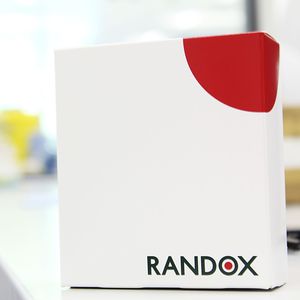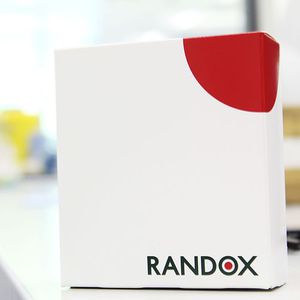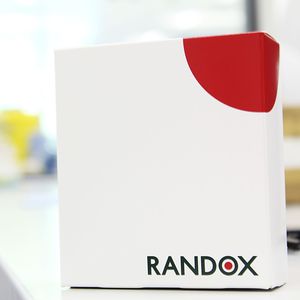
- Laboratory
- Laboratory medicine
- Solution reagent
- Randox Laboratories
Solution reagent FR3133for clinical chemistryliquidprotein
Add to favorites
Compare this product
fo_shop_gate_exact_title
Characteristics
- Type
- solution
- Applications
- for clinical chemistry
- Format
- liquid
- Tested parameter
- protein, HbA1c, glucose, genetic, blood glucose
- Method
- enzymatic
Description
The Randox enzymatic method offers improved specificity and reliability compared to the conventional NBT-based methods as the enzymatic method does not suffer from non-specific interferences unlike the existing methods which can also be time-consuming and difficult to automate.
14-C glucose icon
Standardisation to the highest level
The Randox dedicated fructosamine calibrator and controls are assigned relative to human serum glycated with 14-C glucose, directly reflecting the nature of the patient sample.
Excellent correlation
A correlation coefficient of r=0.98 was displayed with the Randox fructosamine assay was compared to commercially available methods.
Liquid ready-to-use
The Randox fructosamine assay is available in a liquid ready-to-use format for convenience and ease-of-use.
Applications available
Applications available detailing instrument-specific settings for the convenient use of the Randox fructosamine assay on a variety of clinical chemistry analysers.
Fructosamine (glycated protein) has been identified as an early indicator of diabetic control compared to other markers such as HbA1c. RBCs live for approximately 120 days, HbA1c represents the average blood glucose levels for the previous 2 to 3 months. Conversely, fructosamine has a shorter lifespan, of about 14 to 21 days, reflecting average blood glucose levels from the previous 2 to 3 weeks 1.
Fructosamine testing has been identified as being the best for patient care as HbA1c results can be inconclusive for several reasons. Genetic, haematological and disease-related factors negatively impact HbA1c levels, with low levels observed in late stage chronic kidney disease,
Catalogs
No catalogs are available for this product.
See all of Randox Laboratories‘s catalogsExhibitions
Meet this supplier at the following exhibition(s):


Related Searches
- RANDOX test kit
- RANDOX solution reagent
- Blood assay kit
- RANDOX molecular biology reagent
- RANDOX research reagent
- RANDOX diagnostic reagent
- RANDOX laboratory reagent
- RANDOX protein reagent
- Immunoassay rapid diagnostic test
- Cassette rapid diagnostic test
- RANDOX molecular biology test kit
- RANDOX rapid virus test
- RANDOX enzyme reagent
- Respiratory infection test kit
- Whole blood detection kit
- Histology reagent kit
- RANDOX rapid infectious disease test
- Cassette assay kit
- RANDOX immunoanalysis reagent
- Cytology reagent kit
*Prices are pre-tax. They exclude delivery charges and customs duties and do not include additional charges for installation or activation options. Prices are indicative only and may vary by country, with changes to the cost of raw materials and exchange rates.





































































